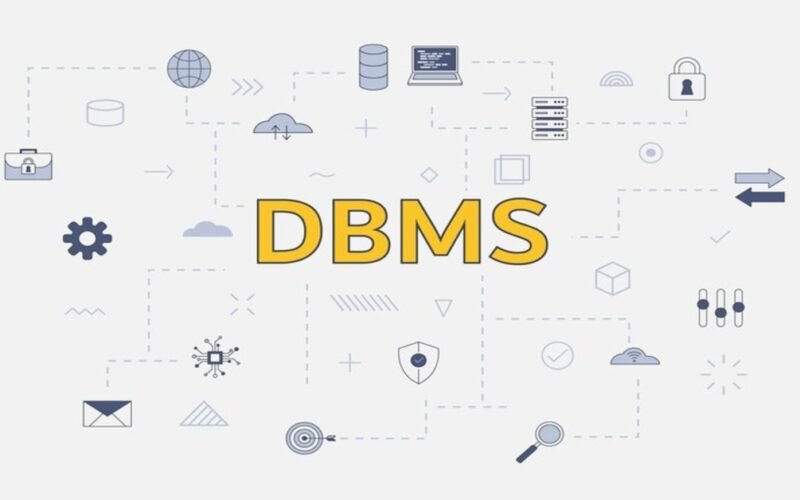Summary: DBMS architecture consists of several key components that work in harmony to manage data efficiently. These include the database engine for executing queries, the query processor for interpreting SQL commands, the storage manager for handling physical data storage, and the transaction manager for ensuring data integrity through ACID properties.
Introduction
In today’s data-driven world, the ability to efficiently manage and manipulate vast amounts of information is paramount for organisations across industries. Database Management Systems (DBMS) serve as the backbone of data management, providing the tools necessary for storing, retrieving, and processing data.
As businesses increasingly rely on Data Analytics and decision-making, a comprehensive understanding of DBMS architecture becomes critical.
This blog will provide an in-depth exploration of DBMS architecture, covering its types, components, importance, evolution, and guidance on selecting the right architecture for specific organisational needs.
What is DBMS Architecture?
DBMS architecture refers to the structural framework that dictates how a database system is organised and how its various components interact with each other. It serves as a blueprint for data storage, retrieval, and management processes.
The architecture of a DBMS can significantly impact its performance, scalability, security, and overall efficiency. A well-designed DBMS architecture ensures that data remains consistent and secure while being easily accessible to authorised users.
It also facilitates the integration of various database functionalities such as transaction management, concurrency control, and data integrity.
Key Features of DBMS Architecture
- Data Abstraction: DBMS architecture provides different levels of abstraction to simplify user interaction with data.
- Data Independence: Changes in database structure do not affect application programs.
- Multi-user Access: Supports concurrent access by multiple users while maintaining data integrity.
- Security Management: Implements access controls to protect sensitive information.
Types of DBMS Architecture
DBMS architectures can be categorised based on the number of tiers or layers they employ. Each type has distinct characteristics suited to different use cases.
Single-Tier Architecture
In a single-tier architecture, all components of the DBMS reside on a single server or machine. This design allows direct access to the database by end users without any intermediary layers.
Characteristics:
- Simplicity: Easy to set up and manage.
- Limited Scalability: As user load increases, performance may degrade.
- Security Risks: Lack of separation between users and data can lead to vulnerabilities.
Use Cases:
Ideal for small applications or individual users where complexity and scalability are not primary concerns.
Two-Tier Architecture
Two-tier architecture introduces a client-server model where the client interacts directly with the database server. In this setup:
- Client Tier: The user interface resides here, allowing users to input commands and view results.
- Server Tier: The database management system operates here, processing requests from clients.
Characteristics:
- Improved Scalability: Supports multiple users accessing the same database simultaneously.
- Performance Issues: May face bottlenecks as user load increases due to direct connections between clients and servers.
Use Cases:
Commonly used in applications where moderate user loads are expected, such as small business applications.
Three-Tier Architecture
Three-tier architecture is widely adopted in modern applications due to its flexibility and scalability. It divides the application into three layers:
- Presentation Tier: The user interface where users interact with the application (e.g., web browsers).
- Application Tier: This middle layer processes user requests and communicates with the database.
- Data Tier: The backend where data is stored and managed.
Characteristics:
- Enhanced Security: Isolates data management from user interactions, reducing risks associated with unauthorised access.
- Scalability and Flexibility: Can handle increased loads by distributing tasks across multiple servers.
Use Cases:
Ideal for large-scale enterprise applications requiring robust performance and security measures.
Read More: What are Attributes in DBMS and Its Types?
Components of DBMS Architecture
Understanding the core components of DBMS architecture is essential for effective database management. The components of DBMS architecture are essential elements that work together to manage data effectively. Key components include the query processor, storage manager, transaction manager, and data dictionary, enabling efficient data operations.
Database Engine
The database engine is responsible for executing queries, managing data storage, and ensuring data integrity. It employs various algorithms to optimise query processing and handle concurrent access from multiple users.
Data Dictionary
The data dictionary acts as a repository for metadata about the database structure, including information on tables, fields, relationships, and constraints. It plays a vital role in maintaining data integrity and consistency by providing a centralised reference point for all database objects.
Query Processor
The query processor interprets SQL queries submitted by users and translates them into actions that manipulate data within the database. It optimises query execution plans to enhance performance by determining the most efficient way to retrieve or modify data.
Transaction Manager
This component ensures that all transactions are processed reliably and adhere to ACID (Atomicity, Consistency, Isolation, Durability) properties. The transaction manager coordinates actions across multiple operations to maintain data integrity even in case of failures or concurrent access.
Storage Manager
The storage manager handles physical storage of data on disk drives. It manages data retrieval processes, indexing methods for quick access, and buffer management to optimise performance by caching frequently accessed data in memory.
Backup and Recovery Manager
This component ensures that data is backed up regularly and can be restored in case of failure or corruption. It implements strategies for both full backups (entire dataset) and incremental backups (only changes since last backup).
Importance of DBMS Architecture
The importance of DBMS architecture lies in its ability to ensure efficient data management, enhance security, promote data integrity, and support scalability, all of which are crucial for modern applications.
Data Integrity
A robust architecture ensures accuracy and consistency through structured management practices that enforce rules governing how data can be created or modified.
Security
DBMS architectures implement various security measures such as user authentication, role-based access control (RBAC), and encryption to protect sensitive information from unauthorised access or breaches.
Scalability
As organisations grow, their data requirements often expand exponentially. A scalable DBMS architecture allows systems to handle increased loads without compromising performance or requiring significant re-engineering efforts.
Efficiency
Optimised query processing through effective indexing strategies enhances performance by reducing response times for user queries while minimising resource consumption.
Indian Context: Growing Need for Robust DBMS Solutions
In India’s rapidly evolving digital landscape—where businesses are increasingly adopting technologies like cloud computing and big Data Analytics—the importance of robust DBMS architecture is amplified.
According to a report by NASSCOM, India’s IT industry is expected to reach $350 billion by 2025, driving demand for efficient database systems capable of managing vast amounts of structured and unstructured data.
Evolution of DBMS Architecture
The evolution of Database Management Systems (DBMS) architecture reflects the dynamic nature of data management technologies, driven by the growing need for efficient data storage, retrieval, and processing. This journey has seen significant transformations from simple file systems to complex, distributed architectures capable of handling vast amounts of data in real-time.
- Flat File Systems: Early systems relied on flat files for data storage but lacked efficient retrieval methods.
- Hierarchical Models: Introduced tree-like structures for organising data but were inflexible due to their rigid schema.
- Relational Models: Gained popularity in the 1970s due to their ability to manage complex relationships using tables; SQL became the standard query language.
- Object-Oriented Databases: Emerged in response to complex applications requiring rich data types; they integrated object-oriented programming concepts with traditional databases.
- NoSQL Databases: Gained traction in recent years for handling unstructured or semi-structured data at scale; they provide flexibility in schema design and are optimised for distributed systems.
In India’s tech landscape, organisations are increasingly adopting NoSQL solutions alongside traditional relational databases to meet diverse needs—especially in sectors like e-commerce, finance, and healthcare where rapid scalability is crucial.
Choosing the Right DBMS Architecture
Selecting the appropriate Database Management System (DBMS) architecture is crucial for ensuring that an organisation’s data management needs are met effectively and efficiently. This section will explore key considerations and criteria for choosing the right DBMS architecture, drawing insights from various sources.
Data Volume
Large datasets may require more scalable architectures like three-tier systems that can efficiently manage high transaction volumes without degrading performance.
User Load
Anticipated concurrent users should influence tier selection; two or three tiers may be preferable for high traffic environments where multiple users need simultaneous access.
Security Needs
Sensitive applications may benefit from architectures that isolate data management from user interfaces—ensuring that only authorised personnel have direct access to critical information.
Budget Constraints
Implementation costs can vary significantly based on architectural complexity; organisations must balance their needs against available resources when making decisions about which architecture to adopt.
Future Growth Potential
Organisations should consider their long-term growth plans when selecting a DBMS architecture—ensuring that chosen solutions can adapt as business requirements evolve over time.
Indian Market Trends: Cloud Adoption
As businesses in India increasingly migrate towards cloud-based solutions—such as AWS RDS or Google Cloud SQL—the choice of DBMS architecture becomes even more critical since these platforms offer flexibility tailored to specific needs while optimising costs associated with infrastructure maintenance.
Conclusion
DBMS architecture serves as a critical backbone for effective data management in today’s digital landscape. Understanding its types, components, importance, evolution, and selection criteria empowers organisations to make informed decisions that enhance their operational efficiency.
As businesses continue to evolve in response to technological advancements and increasing demands for effective data handling solutions—especially within India’s burgeoning tech ecosystem—a robust DBMS architecture will remain essential for leveraging data as a strategic asset.
By investing time into understanding these aspects of DBMS architecture within an Indian context—where digital transformation is accelerating—organisations can better navigate their journey toward effective database management solutions that drive growth while ensuring security compliance throughout their operations.
Frequently Asked Questions
What is The Primary Function of a DBMS?
The primary function of a Database Management System (DBMS) is to facilitate efficient storage, retrieval, updating, and management of data while ensuring security and integrity.
How Does Three-tier Architecture Enhance Security?
Three-tier architecture enhances security by isolating the presentation layer from the application logic and data management layers, reducing risks associated with direct access to sensitive information.
Why is Scalability Important in DBMS Architecture?
Scalability is crucial because it allows organisations to accommodate increasing amounts of data and user requests without degrading performance or requiring significant re-engineering efforts.
By understanding these aspects of DBMS architecture within an Indian context—where digital transformation is accelerating—organisations can better navigate their journey toward effective data management solutions.




